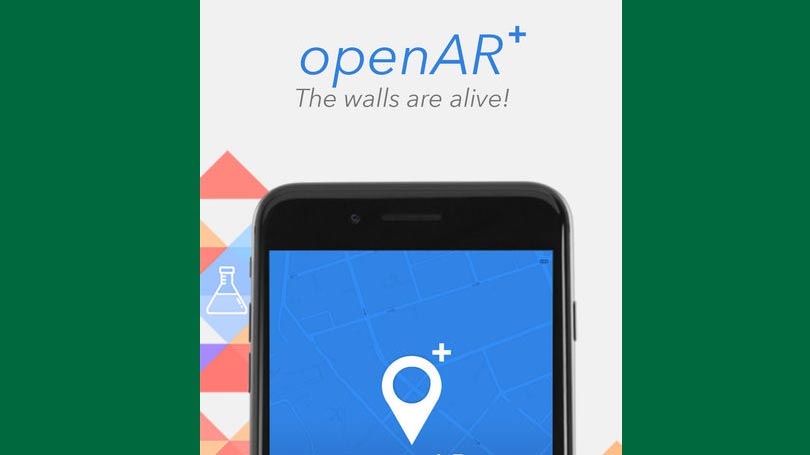
The Grafficity team has been testing the usability of their app with the help of over 100 Dartmouth students and friends and recently released the OpenAR app in Apple’s app store as a pre-release to test user interaction.
Grafficity, one of the first social augmented reality apps, is redefining reality and it is happening right here at Dartmouth.
Just under a year ago, Apple Chief Executive Tim Cook told analysts that Augmented Reality (AR) “is one of those huge things that we’ll look back at and marvel on the start of”. And, just as before, Dartmouth will play a key role. Dartmouth has always been a pioneer when it comes to technological breakthroughs. McNutt Hall is where the first long distance communication between man and computer happened in 1940. In 1956, Dartmouth held the first artificial intelligence (AI) conference, giving birth to the field of AI. The revolutionary vision of this conference profoundly affected the way in which interdisciplinary research can be done in fields of engineering, mathematics, computer science and psychology, and it also served as an inspiration for J. C. R Licklider, one of the creators of the Internet.
With Grafficity, Dartmouth is continues its legacy of pioneering technology developments, not only producing, but democratizing AR.
Dr. Peyman Khorsand is one of the founders of Grafficity. Peyman is a computational neuroscience postdoc in the Psychological and Brain Sciences department who founded Grafficity LLC, a company that focuses on developing apps for people to publish and share AR content or “graffiti’s,” on its platform.
“My dream of building an AR engine was further motivated by the success of Pokémon GO,” notes Khorsand when discussing the impetus for his start-up, “and for a period of time although short, we saw public interest, curiosity and readiness for the new technology.”
Before coming to Dartmouth, Khorsand earned his Ph.D. in Physics from Northeastern University. He then worked as a quantitative analyst for banks in London before he returned to academia and started a postdoctoral position at Dartmouth. He wanted to contribute to the scientific field of computational neuroscience by building an AR engine. “Dartmouth had an active research group that coincided with my research interest in computational and cognitive neuroscience,” Khorsand tells us when asked why he chose Dartmouth. “My research work in computational neuroscience is to explore new methods to expand the possibilities of the human brain. I wanted to apply these new methods through the medium of AR in order to enhance and even upgrade our everyday lives. With AR, it is now possible for everyone to have immediate access to every relevant information in any situation by simply lifting their smartphones.”
Khorsand describes AR as “the connection between virtual information and real physical people, places and things”. AR adds graphical media, audio, touch and even smell, thus changing the way we experience our world. “Picture yourself walking around Dartmouth alone as a first time visitor,” he says. “With the Grafficity app that you have downloaded on your smart phone, when you lift your phone to capture a picture of the Baker tower, informative graphics about the history of the tower will appear on your screen, and an audio of the bell will coincide with what you see.” Khorsand is quick to emphasize that the uniqueness of Grafficity lies in its ability to democratize AR. “With the Grafficity app, users are not simply passive consumers but also active producers of AR content. Users are basically allowed to augment their own reality by attaching media to any real world target simply through capturing a picture.” One example of this capacity might be taking a selfie photo that is superimposed on the clock tower of Baker, and then sharing this new version of reality to private or public audiences.
Khorsand has been gradually building a team that includes Computer Science undergraduates in the Dartmouth Applied Leadership and Innovation (DALI) Lab, graduate students from the Thayer school of Engineering, as well as MBA students from the Tuck Business School. His team has won the “Dartmouth Entrepreneurial Network Founders Grant” as well as the “iCorps Program” from NSF to develop Grafficity.
“With these different supports,” Khorsand notes, “the Grafficity team has built an AR cloud service, potentially making every surface in real life a gateway to vital or entertaining information – basically turning every object around us into a QR code.”
The Grafficity team has been testing the usability of their app with the help of over 100 Dartmouth students and friends and recently released the OpenAR app in Apple’s app store as a pre-release to test user interaction. They plan to and to use feedback and activity patterns to fine tune the app before public release.
When asked how users have interacted with the app, Khorsand says there were a wide variety of uses “some used it to carry out scavenger hunts that were a part of Tuck Bridge Programs, others used it as a platform to publish digital artwork for the Digital Arts Expo, and interestingly, some even used it as a way to find discount coupons for buying cheaper coffee and clothes.”
Khorsand sees Grafficity as an opportunity for all Dartmouth students to not only learn about the latest and exciting technology but also be involved in its development. The future reality is happening now.